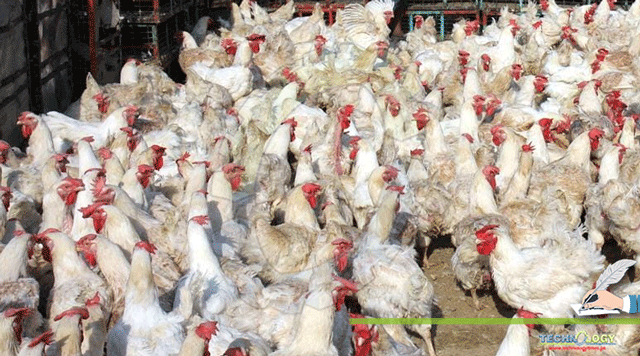20 years ago, the utilization of feed antibiotics and some other antimicrobial compounds used as performance enhancers became the target of increasing public criticism and political controversy (particularly in the EU countries).As the first country in Europe, Sweden banned the utilization of antimicrobial growth promoters as early as 1986.

By Abdul Samad
Introduction
The utilization of avoparcin as a growth promoter was banned first in Denmark (May 1995), subsequently in Germany (January 1996) and eventually in the remaining EU countries by April 1997.Based on various safety concerns and partly as a precautionary measure, the EU Council of Ministers suspended the authorisation of 4 other feed antibiotics (spiramycin, tylosin, virginiamycin, Zn-bacitracin) by July 1999, and two quinoxaline derivatives (carbadox, olaquindox) by September 1999. By January 2006, an EU ban on the utilization of the four remaining feed antibiotics, namely flavophospholipol, avilamycin, salinomycin-Na and monensin-Na (for beef only) became effective. This total ban on the utilization of antibiotics as growth promoters has been integrated into an EU regulation concerning feed additives (No. 1831/2003). Before the implementation of this whole ban on the use of antibiotic growth promoters, some experts attempted to assess possible effects on rate of growth and feed conversion efficiency and discussed possible alternatives after the ban (Brufau, 2000; Verstegen & Schaafsma, 1999; Wenk, 2003; Witte et al., 2000). Serious problems were expected, particularly in early weaned piglets, with a mean reduction in daily weight gain of 8 per cent and a 5 per cent increase in feed consumption per gain. additionally , a dramatic deterioration within the general health status of piglets was expected, leading to a marked increase in prophylactic use of various therapeutic antibiotics.This trend has indeed been observed in many countries after the implementation of this general ban. Following tremendous modernization within the past two decades, Pakistan’s poultry production currently ranks because the eighth largest in the world. However, there’s growing concern about the potential overuse and misuse of antibiotics, which could lead on to antibiotic resistance and negative implications for public health. There’s a need for novel, effective, and affordable alternatives to traditional antibiotics, but they’re difficult to replace because of their use for treatment, prevention, and improving growth.
Eubiotics:
Alternative products for replacement of antibiotic growth promoters Before discussing which currently approved feed additives could be used as effective alternatives for replacement of antibiotic growth promoters, it might be helpful to approach this topic from a scientific point of view, taking under consideration their principal mode of action. there’s currently no doubt that their efficacy is primarily based on antimicrobial effects and their ability to influence and partly modify the composition and overall concentration of intestinal microflora. Taking this into consideration, we will see how various new and some traditional feed additives claim to affect the composition or activity of intestinal microbiota, like organic acids, probiotics, prebiotics, volatile oil compounds, and Zn and Cu compounds. In recent years, a number of those products have been described by the general term ‘eubiotics’, which is said to the Greek term ‘eubiosis’, pertaining to an optimal balance of microflora in the gastrointestinal tract. the most purpose of using such eubiotics is to maintain the intestinal eubiosis, which can result in an improved health status and performance in farm animals.
Organic acids
Organic acids and a few of their salts have been added to compound feeds, for several years, particularly for early weaned piglets. The potential of diet acidification so as to overcome digestive insufficiency and post-weaning problems in piglets has been studied for a long time. The efficacy of acid , acid , acid , carboxylic acid , carboxylic acid and also of some salts (Ca-formate, Na-formate) has been demonstrated. of these compounds are officially approved in the EU as feed preservatives, however, a number of them are used primarily for the stabilisation of health status and performance enhancement at dietary inclusion levels of 0.5 to 2.0 per cent (Gabert & Sauer, 1994; Partanen & Mroz, 1999).In order to reduce dietary inclusion levels and enhance their efficacy at economically feasible costs, either blends of organic acids or coated forms have appeared on the market in recent years. Various hypotheses regarding the mode of action and beneficial effects of organic acids are described in the literature, such as: Improvement of palatability and reduction of diet pH; Antimicrobial and preservative effects within the feed; Reduction of gastric pH and enhancement of pepsin activity; Effects on microflora in the gastro-intestinal tract, reduction of coliforms and diarrhoea;
Increased digestibility of nutrients.
Since July 2001, potassium diformate has been approved as a feed additive within the EU and included in the zootechnical additive group.In May 2003, carboxylic acid has been approved as a feed additive for growing-finishing pigs at the inclusion levels of 0.5 to 1.0 per cent and included within the acidity regulator group. thanks to its specific metabolism, this organic acid shows multiple beneficial effects (Broz, 2004). Dietary supplementation leads to a decrease in urinary pH accompanied by a reduction in ammonia emission and improved growth performance. Since November 2006, carboxylic acid at the inclusion level of 0.5 per cent has also been approved to be used in weaned piglets, as a zootechnical additive. thanks to its antibacterial activity and slower absorption, dietary carboxylic acid is also capable of significantly reducing the density and metabolic activity of intestinal microflora in piglets (Kluge et al., 2006; Broz & Paulus, 2006). Balance trials have confirmed significant beneficial effects on the apparent ileal digestibility of dietary energy and nitrogen, also as a significant increase in nitrogen retention. during a series of performance trials, carboxylic acid at 0.5 per cent has repeatedly resulted in significant improvements in piglet growth rates after weaning.
There are some other alternatives of Antibiotics Like
- Probiotic
- Prebiotics
- Essential oils
Author
Abdul Samad
Affiliation Address
Department of Poultry Sciences, Faculty of Veterinary and Animal Sciences MNS University of Agriculture Multan Pakistan